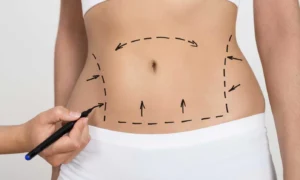
Congratulations on your new bundle of joy! While motherhood is an incredible journey, it can also take a toll on your body, especially your back. Post partum back pain is a common issue that many new moms experience, and it’s essential to address it promptly to prevent long-term discomfort and potential complications.
What is Post partum Back Pain?
Post partum back pain refers to the discomfort or soreness experienced in the lower, middle, or upper back after giving birth. This condition can range from mild to severe and may persist for weeks or even months if left untreated.
Causes of Post partum Back Pain
During pregnancy, your body undergoes numerous changes to accommodate the growing baby. These changes can contribute to pain:
- Weight Gain: The added weight of the baby and other pregnancy-related weight gain can put extra strain on your back muscles and spine.
- Hormonal Changes: Hormonal fluctuations during and after pregnancy can cause ligaments and joints to become more lax, leading to instability and potential back pain.
- Posture Changes: As your baby grows, your center of gravity shifts, causing you to adjust your posture. This can also lead to the muscle imbalances and may cause the back pain.
- Delivery: The physical demands of labor and delivery can put significant stress on your back muscles.
The Importance of Exercise for Post partum Recovery
Exercise plays a crucial role in post partum recovery, including alleviating back pain. Regular exercise can help:
- Strengthen Core and Back Muscles: Targeted exercises can help rebuild the strength and stability of your core and back muscles, which were stretched and weakened during pregnancy.
- Improve Posture: Proper exercise can help correct postural imbalances that may have developed during pregnancy.
- Increase Flexibility: Stretching exercises can improve flexibility and range of motion, reducing muscle tension and discomfort.
- Boost Mood and Energy Levels: Exercise releases endorphins, which can improve your mood and energy levels, aiding in your overall recovery.
When to Start Exercising Post partum
It’s generally recommended to wait until you receive clearance from your healthcare provider before starting any exercise routine after giving birth. This is typically around 6-8 weeks post partum for vaginal deliveries and 8-12 weeks for cesarean births. However, you can begin with gentle exercises and movements as soon as you feel comfortable.

Warm-Up Exercises for Post partum Back Pain
Before diving into more intense exercises, it’s essential to warm up your body and prepare it for the workout. Here are some gentle warm-up exercises to help alleviate discomfort:
- Gentle Stretches: Start with simple stretches for your back, shoulders, and legs. These can include standing or seated forward folds, side bends, and gentle twists.
- Pelvic Tilts: You have to lie on your back and bent your knees and flay your feet on the floor. Tilt your pelvis by gently arching your lower back, then release the arch. Repeat this motion slowly to engage your core and back muscles.
Core Strengthening Exercises
A strong core is essential for providing support to your back and maintaining good posture. Here are some safe core exercises for new mothers:
- Abdominal Bracing: Engage your abdominal muscles by gently drawing your navel toward your spine. Now, hold it for few seconds and then release it.
- Kneeling Arm Raises: Start on your hands and knees. Engage your core and slowly raise one arm out in front of you, then switch sides. This exercise targets your obliques and deep abdominal muscles.
- Planks (Modified): Start in a forearm plank position, supporting your weight on your forearms and toes. You have to hold this position for seconds and also engage your core muscles as well.
Lower Back Strengthening Exercises
Strengthening your lower back muscles can help alleviate and prevent pain. Here are some effective exercises:
- Bridges: You need to lie upon your back and bent your knees. Now, engage your glutes and core and then simply lift your hips off on the floor and form a straight line from your shoulders to knees. Now, you have to hold it for few seconds and then you have to lower down your back.
- Cat-Cow Stretch: Start on your hands and knees. Inhale as you arch your back and look up (cow pose), then exhale as you round your back and tuck your chin (cat pose). Repeat this gentle sequence to mobilize your spine and stretch your back muscles.
Upper Back and Shoulder Exercises
Pregnancy activities, such as carrying and feeding your baby, can put strain on your upper back and shoulders. Consider these exercises:
- Shoulder Blade Squeezes: Sit or stand with your shoulders rolled back and down. Now, you have to squeeze yoru shoulder blades and then you need to hold them for few seconds and then simply release them.
- Wall Angels: Stand with your back against a wall and your feet hip-width apart. Engage your core and press your arms, forearms, and palms against the wall, forming a “W” shape. Slide your arms up and down, keeping them in contact with the wall.
Yoga and Pilates for Post partum Recovery
Gentle yoga and Pilates exercises can be incredibly beneficial for Post partum back Pain relief. These practices focus on strengthening the core, improving flexibility, and promoting proper alignment.
- Benefits of Yoga for Back Pain Relief: Yoga poses can help stretch and strengthen your back muscles, improving posture and reducing tension. Poses like Child’s Pose, Cat-Cow, and Downward-Facing Dog can be particularly helpful.
- Pilates Moves to Strengthen the Back: Pilates exercises target the deep core muscles, which support the spine. Exercises like the Hundred, Roll-Up, and Leg Circles can help strengthen your back and improve stability.
Posture Tips for New Moms
Maintaining good posture is crucial for alleviating and preventing pain. Here are some posture tips to keep in mind:
- Correct Posture While Feeding: When breastfeeding or bottle-feeding, sit upright with your back supported. Use pillows or a nursing pillow to position your baby at a comfortable height, reducing strain on your back and shoulders.
- Ergonomic Tips for Carrying Your Baby: When carrying your baby, keep your back straight and engage your core muscles. Use a baby carrier or wrap to distribute the weight evenly and avoid excessive strain on your back.
Listening to Your Body
While exercise is important for after delivery recovery, it’s equally crucial to listen to your body and respect its limits.
- Recognizing When to Stop: If you experience sharp or persistent pain during or after exercise, stop immediately and consult your healthcare provider.
- Consulting a Healthcare Professional: If your back pain persists or worsens despite exercise, seek guidance from a physical therapist or your healthcare provider. They can simply access your condition and then offers you the recommendations as well.
FAQs
1. Can I exercise immediately after giving birth?
It’s generally recommended to wait until you receive clearance from your healthcare provider before starting any exercise routine after giving birth. This is typically around 6-8 weeks post delivery for vaginal deliveries and 8-12 weeks for cesarean births. However, you can begin with gentle movements and stretches as soon as you feel comfortable.
2. How long should I exercise post partum?
You have to increase the timing and also your workout intensity as well. Also, ensure to take 30 minutes of exercises regularly but make sure to listen to your body and adjust the timing as requried.
3. Is it safe to exercise while breastfeeding?
Of Course! It is completely safe and secure to exercise at the time of breastfeeding. However, it’s important to stay hydrated and consider nursing your baby or expressing milk before exercising to avoid discomfort.
4. Can exercise help with post partum depression?
Regular exercise can help improve mood and reduce symptoms of post partum depression by releasing endorphins and reducing stress levels.
5. Should I wear a postpartum support belt during exercise?
Wearing a support belt or abdominal binder during exercise can provide additional support and stability for your core muscles and back. However, it’s essential to consult with your healthcare provider or a physical therapist to determine if it’s appropriate for your specific situation and to ensure proper use.
Conclusion
It is a common challenge, but it can be effectively managed through regular exercise and proper postural habits. By incorporating the exercises and tips outlined in this guide, you can strengthen your core and back muscles, improve flexibility, and promote overall recovery.
You have to know that every woman post delivery journey is unique in its own. It is good to listen to your body and follow the suggestions given by your doctor. With patience, dedication, and the right exercises, you can alleviate back pain and enjoy this precious time with your new baby to the fullest.
Meta
If you are searching for the post partum back pain exercises then you can check out this detailed guide.








































